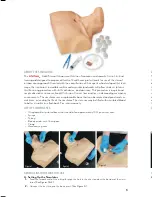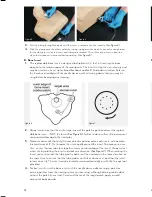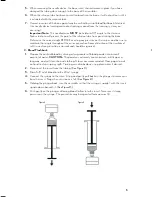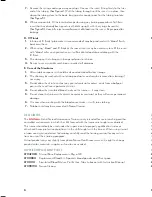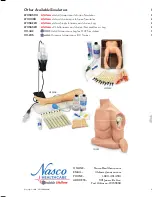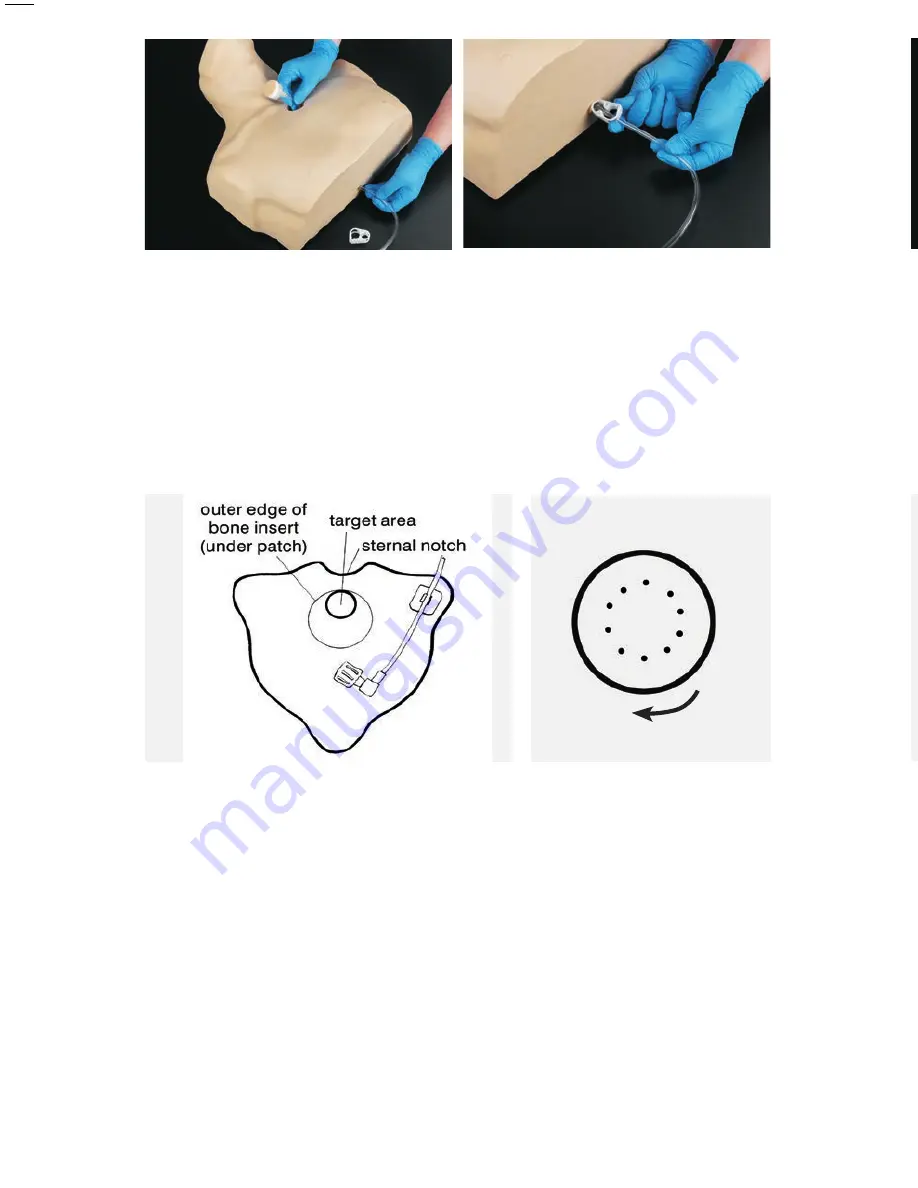
3.
Pull the tubing through the body until the insert is seated in the chest cavity.
(See Figure 4.)
4.
Slide the clamp onto the other end of the tubing, up against the body. Leave only enough room
for the clamp to turn as the insert and tubing are rotated. This will keep the insert in position
when the introducer is removed during training.
(See Figure 5.)
B. Bone Insert
1.
The replaceable bone insert is designed to duplicate the “feel” of inserting the bone
portal into the marrow space of the manubrium. The insert fits into the sternal cavity and
may be used as is, or set up for blood flashback and/or IV fluid administration. Refer to
the literature provided with the needle device or other training device that you may be
using before beginning any training.
Figure 4
Figure 5
4
Figure 6
2.
Always make sure that the entire target area of the patch is positioned over the replace-
able bone insert — NOT the torso.
(See Figure 6.)
Failure to do so will result in permanent
unwarranted damage to the simulator.
3.
Nasco recommends that only 10 procedures be performed on each insert, with an abso-
lute maximum of 12. Try to space the sites equally around the insert. Too many puncture
sites, or sites that are too close together, may cause breakage of the insert. Always select
a new site by rotating the insert in a clockwise direction.
(See Figure 7.)
When rotating the
insert, you must rotate the tubing at the bottom of the simulator in the same direction, at
the same time, to ensure that the tubing does not kink or disconnect, and that the insert
rotates correctly. The insert may be rotated or removed manually or with the forceps tool
provided.
4.
For best results, use the bone insert with the needle device adhesive target patch or
training patches from the training system you are using, although training can be done
without the patch if necessary. To extend the use of the target patch, apply a small
amount of baby powder.
Figure 7
3.
Pull the tubing through the body until the insert is seated in the chest cavity.
(See Figure 4.)
4.
Slide the clamp onto the other end of the tubing, up against the body. Leave only enough room
for the clamp to turn as the insert and tubing are rotated. This will keep the insert in position
when the introducer is removed during training.
(See Figure 5.)
B. Bone Insert
1.
The replaceable bone insert is designed to duplicate the “feel” of inserting the bone
portal into the marrow space of the manubrium. The insert fits into the sternal cavity and
may be used as is, or set up for blood flashback and/or IV fluid administration. Refer to
the literature provided with the needle device or other training device that you may be
using before beginning any training.
Figure 4
Figure 5
4
Figure 6
2.
Always make sure that the entire target area of the patch is positioned over the replace-
able bone insert — NOT the torso.
(See Figure 6.)
Failure to do so will result in permanent
unwarranted damage to the simulator.
3.
Nasco recommends that only 10 procedures be performed on each insert, with an abso-
lute maximum of 12. Try to space the sites equally around the insert. Too many puncture
sites, or sites that are too close together, may cause breakage of the insert. Always select
a new site by rotating the insert in a clockwise direction.
(See Figure 7.)
When rotating the
insert, you must rotate the tubing at the bottom of the simulator in the same direction, at
the same time, to ensure that the tubing does not kink or disconnect, and that the insert
rotates correctly. The insert may be rotated or removed manually or with the forceps tool
provided.
4.
For best results, use the bone insert with the needle device adhesive target patch or
training patches from the training system you are using, although training can be done
without the patch if necessary. To extend the use of the target patch, apply a small
amount of baby powder.
Figure 7
HC190001INM41.indd 7-8
5/1/19 1:30 PM



